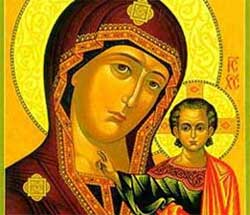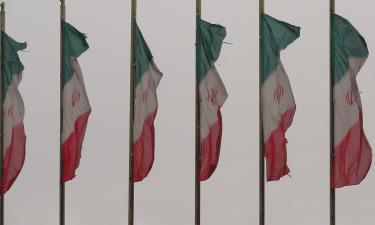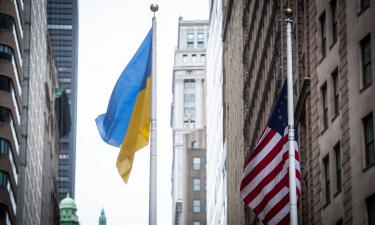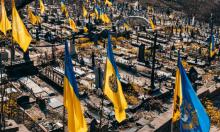Crying icons perplex both Catholic and Orthodox clergymen
Tears flowing down an icon is an omen signaling that ordeals and troubles are on their way
Lately reports on rumored divine miracles have begun to appear in press more often than before. Some people believe the stories they read, others have their doubts. Some people even conduct scientific experiments in search of rational explanations behind the phenomenon. Margarita Hak, an Italian astrophysicist, believes she has managed to expose one of the most famous miracles of the Roman Catholic Church – the miracle of Saint Januarius. A spokesperson for the Moscow Patriarchy commented on the situation. 
Five icons of St. Catherine Church in the city of Petrozavodsk were giving off tears in 1998. All icons in the Church of the Intercession of the Holy Virgin in the city of Dzerzhinsk were oozing tears earlier this year, some tears looked like blood. Ten icons dating back to the 15th and the 19th centuries began emitting myrrh on June 28th, 2005, in the Sochi Art Museum. Similar cases like that have been reported recently.
Ekaterina Ilyinskaya has been involved in the restoration of icons for some 20 years. “I can recall a story for you straight off,” says she. “We were about to open an exhibition in Karetny Ryad five years ago. There was a bunch of reporters waiting in the hall. When we finally let them in, the smell of frankincense was hovering all around the room. The reporters thought that we had chain-smoked. But nobody entered the room prior to the unveiling of the show. The guard on the premises was fast asleep all night,” says Mrs. Ilyinskaya.
According to press service of the Moscow Patriarchy, the Russian Orthodox Church believes in the possibility of beneficial miracles yet every case is normally called into question and verified with utmost caution. “We would rather pass over a real miracle than declare something a miracle which is really not,” said a spokesperson for the press service.
Dozens of books concern the exposure of miracles. Margarita Hak, an Italian astrophysicist, has announced recently that the miracle of Saint Januarius' blood liquefaction was a falsification. The residents of Naples regard manipulations with Saint Januarius' dry blood sealed in a glass vial as a national religious holiday and prognostication for the next year. It is thought to be a portent if blood remains dry. On the contrary, the next year should be calm and prosperous if blood liquefies.
Speaking to NewsInfo, a spokesperson for the Moscow Patriarchy said that the Russian Orthodox Church had nothing to do with the miracle of Saint Januarius. However, the majority of church officials reportedly believe that Dr. Hak's allegations are absolutely groundless.
“The scientific evaluation was carried out in the 1980s. It proved that the phenomenon could not be explained. Moonstruck ladies with questionable scientific potential can not cast doubt on the real fact,” said the spokesperson.
The Russian Orthodox Church set up a commission in 1999 for the description of divine miracles occurring in the Russian Orthodox Church. The chairman of the commission is Pavel Florensky, a grandson of the famous theologian Pavel Florensky. Mr. Florensky says that plain scientific inquisitiveness is a driving force of the commission. Aside from physicists Alexander Moskovsky and Sergei Sashinsky, biologist Alexander Agadzhanyan and philologist Tatyana Shutova also partake in the work of the commission.
First off, there is obvious confusion regarding the terminology, point out the members of the commission. Myrrh is a very precious incense cooked personally by Patriarch at a special service. A person is anointed with myrrh once in a lifetime during his or her baptism. It is considered a good sign when an icon exudes myrrh. On the contrary, tears flowing down an icon is an omen signaling that ordeals and troubles are on their way.
Subscribe to Pravda.Ru Telegram channel, Facebook, RSS!





